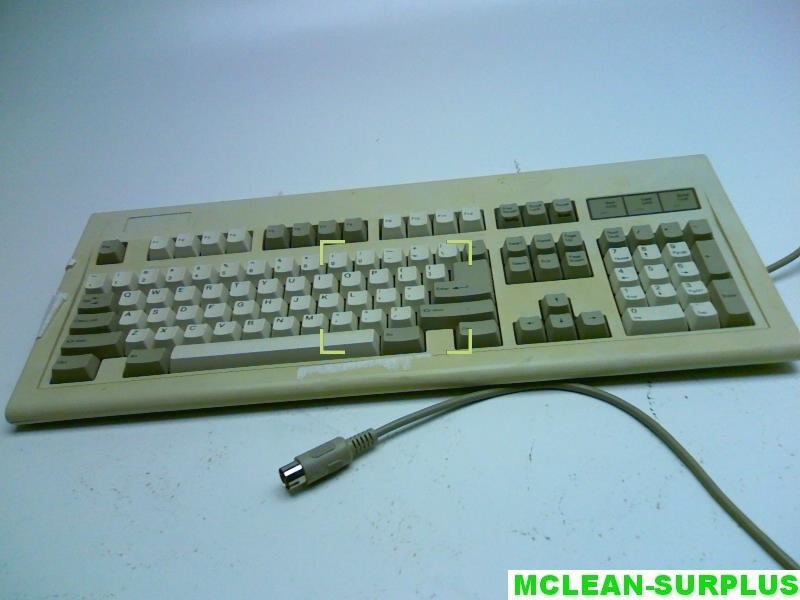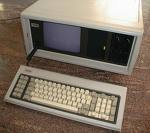I can’t read the following article without thinking they must have been hearing the opening bell from AC/DC’s “ Highway to Hell” throughout this entire demonstration.
MickeyWare has failed each and every time it has pushed a tablet onto the public. Bloated software and bad design cannot be compensated for by marketing. I’ve been there since the beginning. Early in my DOS days I was writing route auditing systems for Waste Management using the GridPad computer and proprietary pen based OS. Try as Tandy might, they couldn’t speed up the interface enough to compensate for the fact it had an 8086 running under it. Probably the worst thing they ever did was to allow for the display of graphics because management wanted every button to have a bitmap once they found that out. Adding insult to injury was the fact we had what amounted to EEPROM cards for both software and data storage. The combination of these two things made every screen paint horribly slow.
This isn’t the first time MickeyMouse Ware has tried to push a tablet on us. Anyone reading this old enough to remember when PenWindows came out? http://danbricklin.com/tabletcomputing.htm It is nice to see that not much has changed since that blog was written in 2002. What is more impressive is the fact we have seen nearly every computer manufacturer drop one of these turds onto the market and, without exception, they have all failed. http://en.wikipedia.org/wiki/Tablet_computer Just take a look at the long list of convertible PCs at the end of that article. I’m not even certain the list is complete, but I remember the hype surrounding each one of those products as the plopped into the toilet of life.
The convertible was always the holy grail for hardware designers. In theory this allowed you to satisfy your existing notebook base while grabbing new sales territory. In reality, they simply polluted landfills faster. That flexy-twisty spot used some form of cable in every design and the cables always broke.
We shall see if Apple has figured it out. Microsoft is obviously a has-been company given the joint announcement they had with HP about yet another market turd this week. They had to be rushing to have a conference in front of Apple just so they could try to make it sound like they didn’t attempt a cheap imitation of yet another Apple rip-off. Anyone remember Zune???
I’m willing to be Apple got it right. I’m willing to bet they ditched the “convertible” idea completely and simply provided extra USB and/or PS/2 ports on the side of a razor thin table. You see, today’s “gear kids” already go through keyboards like an older generation went through Boones Farm wine. Not only do they keep multiple keyboards laying around at the various places they tend to work (as do most business travellers today), but the younger crowd tends to carry these things in their backpack. http://www.thinkgeek.com/computing/input/5a7f/ I’ve seen them for under $20 in some mail order catalogs. I’ve tried typing on them in a few stores. Definitely not the easiest on the fingers, but you can get through a couple of meetings with them, no problem.
What was once considered an oddity is now considered common place, and that is the true norm of life. I’ve had a habit for years of rotating out keyboards every so many weeks or months, just to break up the monotony of typing. You see, I have to blame Chicony for this. Some time, not long after I bought my AST Premium 286 PC, I bought a Chicony KB-5181 clicky keyboard. That keyboard was the absolute best! It had the perfect spring and it was loud with its clicks. Most of today’s keyboards (even the cheap ones) don’t make any noise, or simply make a plastic rattle when you type fast on them. The 5181 had IBM PS/2 keyboard users telling me I needed a quieter keyboard. (You might still be able to find a PS/2 keyboard to get an idea just how loud the 5181 was.) I moved that keyboard from machine to machine to machine.

The problem was that the old keyboard used a big-DIN connector. I had various adapters to take it down to PS/2, but they all seemed to fail after a while. Finally, it became apparent that the keyboard driver chips on “modern” computers simply wouldn’t support a keyboard that still had an XT/AT switch on the bottom of it. (Yes children, there was a time when you couldn’t move a keyboard from one computer to another without tossing a well hidden DIP switch on the keyboard.)
After having gotten to the point in life where I had to toss that (and the other old big-DIN) keyboards out I had accumulated over the years, I got into the habit of picking up keyboards if I happened to see one for under $12 (usually $6) that seemed to type nice. I was doing my travelling consulting bit then, and the one thing you could always leave out of your gear to save space/weight was a keyboard for your notebook. Oddly enough, there always seemed to be room to bring the keyboard back. I haven’t quite figured that part out yet.
I suppose if I hadn’t gotten into the “cheap keyboard” phase and hadn’t been traveling to client sites I wouldn’t have gotten into the accumulate keyboard phase. I simply would have went out and dropped another $60-$80 on a keyboard I loved and moved it from machine to machine again. Of course, I take computers with me more now that I have a notebook instead of a singer sewing machine to lug around. Unless you are really old, you probably don’t have any concept of what a 38lb portable computer the size of a portable sewing machine looked like. I even had trouble finding a picture on-line. Mine weighed in at 38LBs because I had the 9” color VGA monitor and a whopping 40Meg hard drive with a dual 5.25 and 3.5” floppy drive. Those of us who needed to be able to add cards into our computers (like Digiboard 8 port serial cards or PIO-48 cards to control relays) had no choice. Eventually “ lunch box” computers came out. They weighed less, and as long as you didn’t need to put in a full length ISA card, you could get by with them. All of them had a built in drop down or tilt out keyboard that “could” be used to type on, but most of us also lugged around a keyboard we liked. A lot of vendors now sell “ rugged” versions of these lunch box computers pretty much for the same reason many of us carried a sewing machine.



Before I confuse the younger crowd too much, there were no batteries with either the luggable sewing machine sized or lunch box sized portable computers. You still had a big black standard power cord wadded up in that box which had to find an outlet. You didn’t even think about trying to use such a thing on the plane or a train. In many ways I miss my 486DX laptop from those days. I could use it on a train and running DOS with WordPerfect or a programming text editor it got over 6 hours of battery life…sigh
So, HP and Microsoft are proving once again that they don’t have the vision required to open a can of beer, and the rest of us are waiting for Apple to come out with a tablet that allows a user to hook up their own keyboard if they want it.
There will be a significant business niche for a tablet computer, just not a consumer niche. The GridPad, while ignored by most of the PC trade rags, sold many units to business customers. Developers wrote customized business applications for them, and despite the cost of the units, they were put into the field. Until you think about just how hard it was to keep paper auditing forms clean and legible from inside the cab of a garbage truck, you cannot begin to understand how much money was saved by spending some on the GridPad and the auditing software. The data went straight into the corporate systems once the auditor got back. It wasn’t real time, but it was close enough for then.
I have seen UPS and other delivery companies steer away from pen based and touch screen based computers in their vehicles. Both companies appear to spend quite a bit of money on developing custom hand held computers. Part of me things the government should force both companies into handing some of that technology over to the U.S. Post Office so they could be a little more up to date on the package delivery side. Despite all of the brew-ha-ha you hear during the health care debate, The high end shipping companies don’t seem to have a problem with the Post Office being there. I have physically seen most of them come into my local Post Office to drop off packages for people. It appears the higher end carriers have some kind of arrangement for when shipping is light or doesn’t require signature that they simply drop it off at the local post office for delivery. In other words, the high end shipping companies have found a way to make money using the post office. I suspect the health insurance companies will do the same, much the way we now have Medicare with high end companies providing “supplemental” insurance.
Ah well, sorry, I veered off course there.
At any rate, the TabletPC is not going to be a “ wow gotta have it” product for consumers, especially in a down economy…unless Apple has found a way to get their smart phone to be solid at its current size, but expand to a full tablet with 24” monitor on demand, I don’t see the Tablet being more than a profitable niche. Actually, for Microsoft and HP, it won’t even be that.